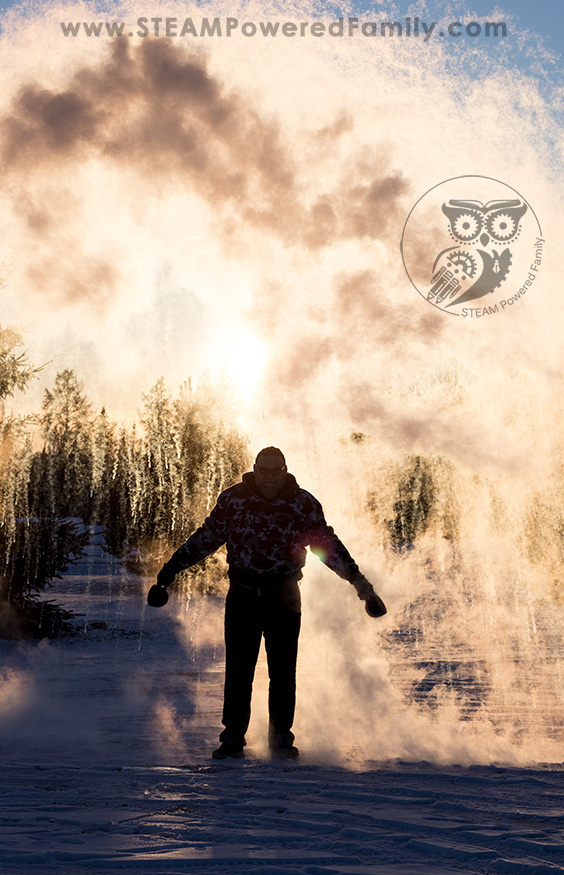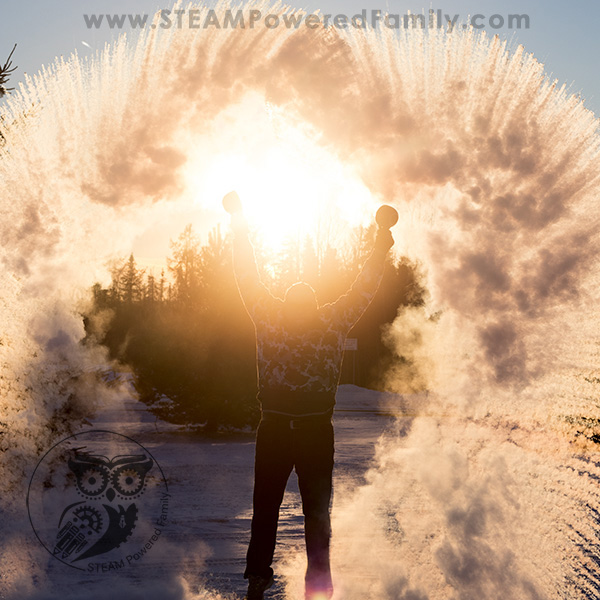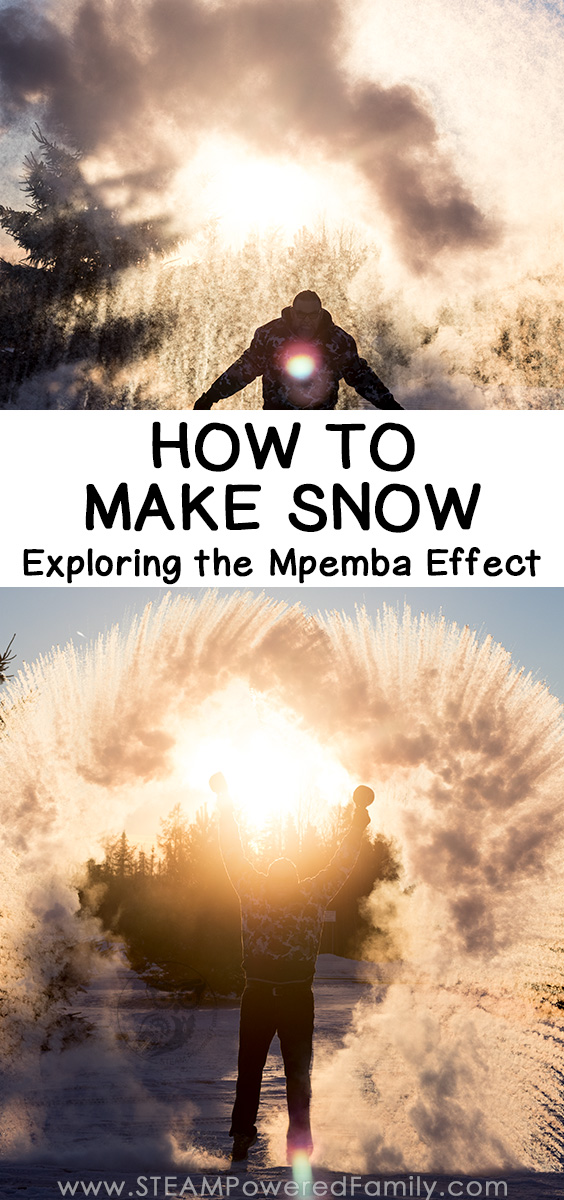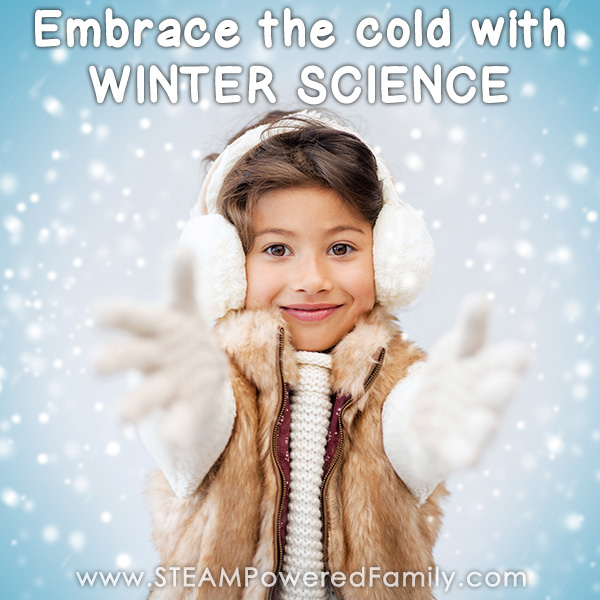How to Make Snow Blizzards – Exploring the Mpemba Effect
In Canada winter is by far our longest “season” of the year. So we need to get creative in how we play. And how we learn. Our weather is a pain in the butt most of the time, but with a little ingenuity we can turn even the worst weather into something miraculous! Cue one of our favourite activities…
HOW TO MAKE SNOW
Eploring the Mpemba Effect in a Spectacular Way!

The way we make snow in Canada is not completely unique to us. From what I hear it should also work at the North Pole and South Pole, oh and possibly Mars. But the whole ‘no atmosphere’ thing will cause some issues if you try this on the Red Planet. Seriously though, this experiment is something that will only work in select places in the world, at very specific times, and only under the right conditions.
Please don’t try this at home unless you are going to be safe about it and have the right conditions. We have been doing this for years and have tested it extensively. Even on the day we took these photos we tested for hours, used safety gear, and ensured at all times that safety was the number one priority. There are too many stories of people burning themselves trying this because they don’t realize what conditions are required to do this safely and didn’t take proper safety precautions.
So what are these powerful, secret conditions?
Cold. Stinking, nasty, freezing your nose hairs, making your face hurt, cold. No, not the cold you are thinking of… worse, much worse.
I know some of you think you have winters and cold weather, but for this experiment you need true cold. Here is the current forecast in our closest city. This is in Celsius.

For those that don’t use the metric system here is a quick conversion…
-34C = -30F
-47C = -53F
The temperature conversion from Celsius to Fahrenheit is a little different. At -40 degrees it is the same in both Celsius and Fahrenheit.
So it’s cold. Really cold. It was -40 degrees with zero wind when we did this.
And I’m sure you are thinking… it’s Canada, you have snow! Why would you want to make more? Well because this method of making snow is spectacular! It uses some really awesome science. And hey, when in Canada, do as Canada does. Embrace the snow, make more snow!

How to Make Snow
So what is our great Canadian secret for making snow?
Hot water and those nasty cold temperatures.
Watch what happens.
So how can you do this and make your own snow storm when it is freaking cold out? First it needs to be dangerously cold. We did it at -40 degrees and I wouldn’t recommend trying it at any temperature above -30C. Jump down to the Science section at the bottom of this article to learn why.
Use safety gear, safety glasses, protective gloves and clothing. Oh and a responsible adult.
Fill a heat proof cup with your boiling water. Then go outside, not in the door way… you need it truly cold for this to really work. Go far away from any buildings and people. Aim yourself so any breeze is at your back and will carry it away from you, then toss it hard and high!
Make sure you are tossing it up and away from yourself and there is no wind that will blow it back at you. It is important that a responsible adult does this and children and pets are kept far away. Ours stayed inside and watched through the window, so they could stay warm! No sane person wants to be out in -40 degree weather.
No one wants to get burned. Always be safe.
There are a lot of reports of people burning themselves trying this activity. Please, be smart. When I say -40, it is the same in Celsius and Fahrenheit, I mean it was truly -40. Our overnight temperatures are hitting -50. Almost no where else on the planet experiences these kinds of temperatures. Stay safe and just look at the pretty pictures and videos unless you also live where these extended, extreme cold and extreme dry temperatures exist.


The Science Behind Making Snow
So how and why does this happen? When temperatures are this extreme the air is extremely cold, extremely dry (remember it has been -30 and colder for weeks here) and extremely dense. When the water is thrown with a lot of force it spreads out rapidly, bringing more of the molecules into contact with the frigid air. Then the Mpemba Effect kicks in, which is the propensity of water to freeze faster when hot than when cold. So when you have such extreme conditions the water droplets crystallize, falling as “snowflakes” plus creating more steam to form a little cloud. Resulting in your own little blizzard.
Cool Fact! The Mpemba Effect has been known since the time of Aristotle, but is actually named after a Tanzanian student who showed the effect in science class while making ice cream. He showed that if you heated the ice cream mixture before freezing it, you could make ice cream faster.
For this to be truly effective you need a substantial temperature difference because the rate of heat transfer is proportional to the difference in temperature. With less temperature difference you will get mostly vapour and possibly even water that hasn’t cooled falling, which can be extremely dangerous.
You can read more about it here where Mark Seeley, a climatologist at the University of Minnesota, explained “[the] air has more water vapor than it has room for. So the vapor precipitates out by clinging to microscopic particles in the air, such as sodium or calcium, and forming crystals. This is just what goes into the formation of snowflakes. You have to have a huge temperature gradient to see this effect.”
Want to try a more simple exploration of the Mpemba effect? Place two mugs in the freezer after filling one with hot water and one with cool water. See which one freezes first!





